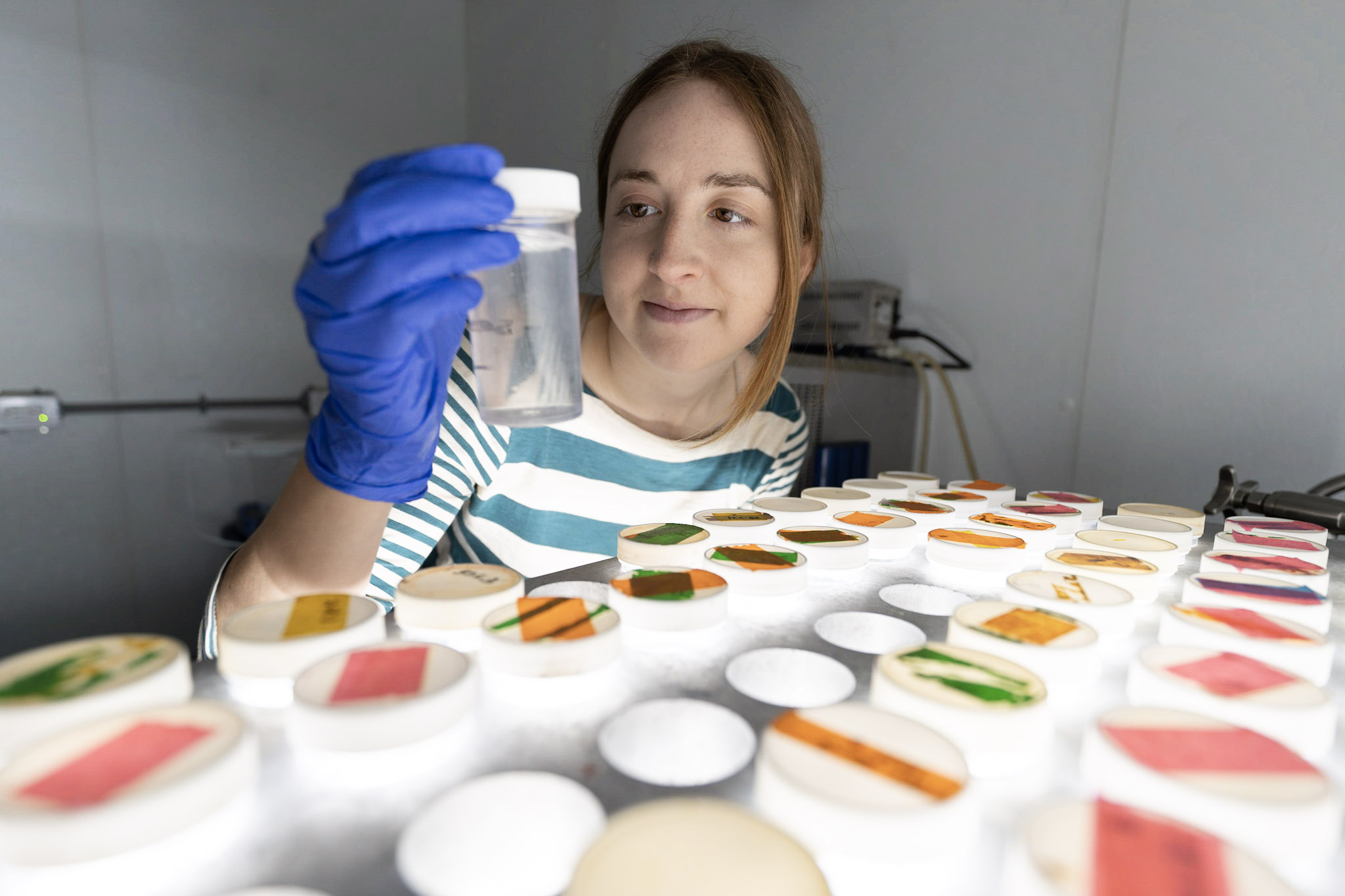Computational marine science to identify climate change stress in two globally important cyanobacteria: Crocosphaera and Trichodesmium
Picture a marine biologist. Maybe they are wearing a lab coat and gloves, doing experiments in the lab. Maybe they are at sea on a research vessel collecting samples. My name is Kyla Kelly, a rising 6th year PhD candidate in the Marine Biology and Biological Oceanography program at USC. But instead of doing my studies in the lab or at sea, I’m sitting here doing research at my computer. As marine biologists, we do carry out a lot of research in the lab or in the field, but the real magic happens on the computer.

As a USC Wrigley Fellow this summer, I am studying how two open ocean cyanobacteria, Crocosphaera watsonii and Trichodesmium erythraeum, may be impacted by climate change. Crocosphaera and Trichodesmium are important sources of nitrogen to the marine ecosystem, as they are among the few organisms that can convert atmospheric nitrogen gas (N2) to ammonia – a form of nitrogen that is easier for phytoplankton to consume. This process of nitrogen conversion is known as diazotrophy (di = two, azo = nitrogen à N2; and trophy = food or nourishment). This biological conversion is important because the scarcity of nitrogen often constrains phytoplankton growth in large areas of the global ocean. Therefore, diazotrophs like Crocosphaera and Trichodesmium perform a critical ecosystem service by providing nitrogen for other organisms.

Climate change is affecting phytoplankton, but we don’t yet fully understand how Crocosphaera and Trichodesmium might be impacted. You’ve probably heard that warming can be stressful to all sorts of organisms on Earth, and that’s certainly true for phytoplankton. What you may not know is that the amount of iron in some parts of the ocean is also expected to decrease with climate change. Iron is especially important to diazotrophs, as their nitrogen-fixing enzyme (nitrogenase) is made up of lots of iron. Therefore, to provide nitrogen to other organisms, iron is required. But what happens if there isn’t enough iron? And how do Crocosphaera and Trichodesmium cope with the combination of iron limitation and warming that is expected with climate change? These are the research questions I am trying to answer as USC Wrigley Fellow.

Previous studies grew Crocosphaera and Trichodesmium in the lab under conditions that simulate a future ocean altered by climate change: warmer with less iron available. Surprisingly, under these climate change conditions Trichodesmium grew better and fixed more nitrogen than expected, while Crocosphaera experienced considerable stress under these conditions. How strange!
How does Trichodesmium thrive under these climate change conditions? I investigated this question by doing a deeper dive and examining what was happening at the molecular level. I collected and analyzed the RNA from Crocosphaera and Trichodesmium cells, then used my coding skills to compare and contrast how genes differentially are expressed between climate change treatments and the two species.

I found that while Trichodesmium highly express genes for heat shock proteins under warm, iron-limited climate change conditions, Crocosphaera do not. These heat shock proteins provide stability for the cell under stressful conditions. Therefore, my data suggests that iron limitation specifically triggers this coping response, enabling them to better withstand the “shock” or warmer temperatures. Furthermore, Trichodesmium expressed less nitrogenase (the nitrogen fixing enzyme) under climate change conditions. The decreased nitrogenase expression yet increase in nitrogen fixation rates indicates that these cells were more efficient with their iron under climate change conditions (i.e., the nitrogenase is “working harder” and less of it is needed to get the job done). Overall, this study of the molecular mechanisms underlying Trichodesmium and Crocosphaera’s responses to climate change helps to explain why Trichodesmium unexpectedly grows better and fixes more nitrogen under climate change conditions.
Studies like these are critical to gaining a better understanding of how human-altered oceans may impact ecosystem processes. Marine cyanobacteria such as Crocosphaera and Trichodesmium are foundational in supporting the marine ecosystem as the base of the food chain and important players in biogeochemical cycling of nitrogen. Therefore, the response of these cyanobacteria to climate change reflects overall ocean health. As I continue this research, I hope to use this gene expression analysis to identify genes that could be indicators of climate change induced stress. These “biomarker genes” could be used in assessing ocean health during global ocean surveys, as their presence could indicate phytoplankton stress. This knowledge is crucial for accurately projecting the consequences of climate change and establishing solutions to mitigate climate change.
Kyla Kelly is supported by the USC Dornsife Wrigley Institute Graduate Fellowship.
